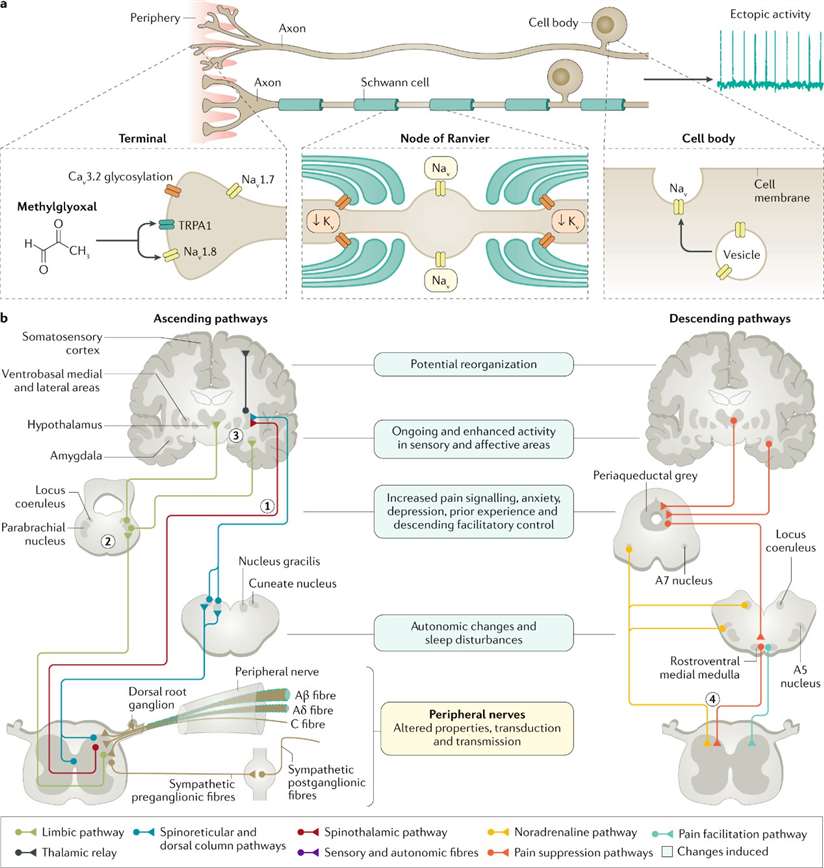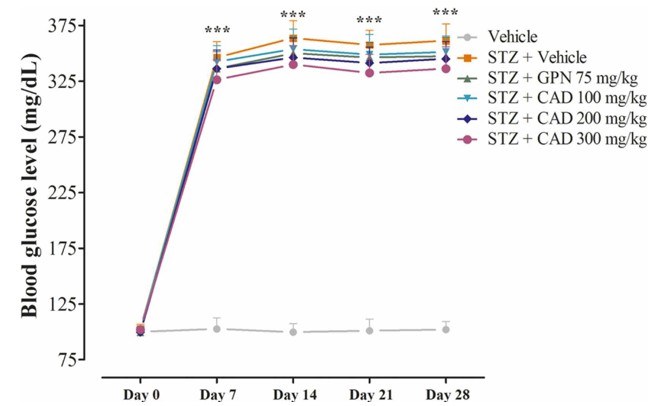- You are here: Home
- Services
- Disease Models
- Pain Models
- Neuropathic Pain Models
- Diabetes-Induced Neuropathic Pain Model
Services
-
Cell Services
- Cell Line Authentication
- Cell Surface Marker Validation Service
-
Cell Line Testing and Assays
- Toxicology Assay
- Drug-Resistant Cell Models
- Cell Viability Assays
- Cell Proliferation Assays
- Cell Migration Assays
- Soft Agar Colony Formation Assay Service
- SRB Assay
- Cell Apoptosis Assays
- Cell Cycle Assays
- Cell Angiogenesis Assays
- DNA/RNA Extraction
- Custom Cell & Tissue Lysate Service
- Cellular Phosphorylation Assays
- Stability Testing
- Sterility Testing
- Endotoxin Detection and Removal
- Phagocytosis Assays
- Cell-Based Screening and Profiling Services
- 3D-Based Services
- Custom Cell Services
- Cell-based LNP Evaluation
-
Stem Cell Research
- iPSC Generation
- iPSC Characterization
-
iPSC Differentiation
- Neural Stem Cells Differentiation Service from iPSC
- Astrocyte Differentiation Service from iPSC
- Retinal Pigment Epithelium (RPE) Differentiation Service from iPSC
- Cardiomyocyte Differentiation Service from iPSC
- T Cell, NK Cell Differentiation Service from iPSC
- Hepatocyte Differentiation Service from iPSC
- Beta Cell Differentiation Service from iPSC
- Brain Organoid Differentiation Service from iPSC
- Cardiac Organoid Differentiation Service from iPSC
- Kidney Organoid Differentiation Service from iPSC
- GABAnergic Neuron Differentiation Service from iPSC
- Undifferentiated iPSC Detection
- iPSC Gene Editing
- iPSC Expanding Service
- MSC Services
- Stem Cell Assay Development and Screening
- Cell Immortalization
-
ISH/FISH Services
- In Situ Hybridization (ISH) & RNAscope Service
- Fluorescent In Situ Hybridization
- FISH Probe Design, Synthesis and Testing Service
-
FISH Applications
- Multicolor FISH (M-FISH) Analysis
- Chromosome Analysis of ES and iPS Cells
- RNA FISH in Plant Service
- Mouse Model and PDX Analysis (FISH)
- Cell Transplantation Analysis (FISH)
- In Situ Detection of CAR-T Cells & Oncolytic Viruses
- CAR-T/CAR-NK Target Assessment Service (ISH)
- ImmunoFISH Analysis (FISH+IHC)
- Splice Variant Analysis (FISH)
- Telomere Length Analysis (Q-FISH)
- Telomere Length Analysis (qPCR assay)
- FISH Analysis of Microorganisms
- Neoplasms FISH Analysis
- CARD-FISH for Environmental Microorganisms (FISH)
- FISH Quality Control Services
- QuantiGene Plex Assay
- Circulating Tumor Cell (CTC) FISH
- mtRNA Analysis (FISH)
- In Situ Detection of Chemokines/Cytokines
- In Situ Detection of Virus
- Transgene Mapping (FISH)
- Transgene Mapping (Locus Amplification & Sequencing)
- Stable Cell Line Genetic Stability Testing
- Genetic Stability Testing (Locus Amplification & Sequencing + ddPCR)
- Clonality Analysis Service (FISH)
- Karyotyping (G-banded) Service
- Animal Chromosome Analysis (G-banded) Service
- I-FISH Service
- AAV Biodistribution Analysis (RNA ISH)
- Molecular Karyotyping (aCGH)
- Droplet Digital PCR (ddPCR) Service
- Digital ISH Image Quantification and Statistical Analysis
- SCE (Sister Chromatid Exchange) Analysis
- Biosample Services
- Histology Services
- Exosome Research Services
- In Vitro DMPK Services
-
In Vivo DMPK Services
- Pharmacokinetic and Toxicokinetic
- PK/PD Biomarker Analysis
- Bioavailability and Bioequivalence
- Bioanalytical Package
- Metabolite Profiling and Identification
- In Vivo Toxicity Study
- Mass Balance, Excretion and Expired Air Collection
- Administration Routes and Biofluid Sampling
- Quantitative Tissue Distribution
- Target Tissue Exposure
- In Vivo Blood-Brain-Barrier Assay
- Drug Toxicity Services
Diabetes-Induced Neuropathic Pain Model
Creative Bioarray has established the diabetic-induced neuropathic pain model induced by streptozotocin (STZ), which is the most commonly employed animal model used to study mechanisms of neuropathic pain and to evaluate potential therapies. With Creative Bioarray, you can trust that the data generated will be reliable, accurate, and directly applicable to the advancement of your drug development efforts. We invite you to explore the possibilities that our diabetic-induced neuropathic pain model can offer and to partner with us in your quest to bring new, effective treatments to patients suffering from this debilitating condition.
Diabetes is a leading cause of neuropathy, with distal symmetrical polyneuropathy (DSPN) being the most prevalent form, affecting over 90% of diabetic patients. Often, individuals seek medical attention only when pain manifests, a symptom experienced by 10% to 26% of this population. Diabetic neuropathic pain (DNP) is characterized by sensations such as tingling, burning, sharpness, shooting, and electric shock-like feelings. It is typically described as moderate to severe and tends to worsen at night, disrupting sleep. The pain can be persistent and may be accompanied by cutaneous allodynia, significantly impacting patients' quality of life, hindering daily activities, and negatively affecting mood. In diabetic neuropathy, injured sensory neurons become hyperexcitable, generating action potentials spontaneously without external stimuli and exhibiting an altered stimulus-response function. This abnormal neural activity is critical for sustaining neuropathic pain, even in patients with long-term pain conditions.
 Fig. 1 Central and peripheral mechanisms contributing to neuropathic pain in diabetic neuropathy. (Feldman et al. 2019)
Fig. 1 Central and peripheral mechanisms contributing to neuropathic pain in diabetic neuropathy. (Feldman et al. 2019)
Our Diabetes-Induced Neuropathic Pain Model
- Available Animal
- Rat
- Mouse
- Modeling Method
STZ is administered to each animal by intraperitoneal injection to induce neuropathic pain.
- Endpoints
- Clinical observation
- Body weight
- Blood glucose
- Behavioral tests: Von Frey test, Hot plate test, etc.
- Histology analysis
- qPCR or Western blot
- Other customized endpoints
Example Data
 Fig. 1 Blood glucose level of rats. (Ullah et al. 2022)
Fig. 1 Blood glucose level of rats. (Ullah et al. 2022)
 Fig. 2 Effect of the CAD extract on diabetes-induced tactile (A) and cold (B) allodynia. (Ullah et al. 2022)
Fig. 2 Effect of the CAD extract on diabetes-induced tactile (A) and cold (B) allodynia. (Ullah et al. 2022)
In addition, we also provide other neuropathic pain models that maybe you might be interested in:
- Chemotherapy-Induced Neuropathic Pain Model
- Chronic Constriction Injury (CCI) Model
- Spared Nerve Injury (SNI) Model
- Partial Sciatic Nerve Ligation (PSL/PSNL) Model
- Spinal Nerve Ligation (SNL) Model
Quotation and Ordering
Creative Bioarray has a longstanding history of assisting our clients in navigating the complex landscape of preclinical efficacy testing to propel their groundbreaking innovations forward. With a deep bench of expertise and state-of-the-art facilities, we offer a comprehensive suite of services tailored to meet the diverse needs of our clients across various therapeutic areas. If you are interested in our services, please feel free to contact us at any time or submit an inquiry to us directly. We look forward to cooperating with you.
References
- Ullah, R., et al. Cassia artemisiodes attenuate nociceptive and diabetes-induced neuropathic pain modalities apropos antioxidant and anti-inflammatory mechanisms. Biomedicine & Pharmacotherapy, 2022, 149: 112834.
- Feldman, E.L., et al. Diabetic neuropathy. Nature reviews Disease primers, 2019, 5(1): 1-18.
- Schreiber, A.K., et al. Diabetic neuropathic pain: physiopathology and treatment. World journal of diabetes, 2015, 6(3): 432.
Explore Other Options
For research use only. Not for any other purpose.

